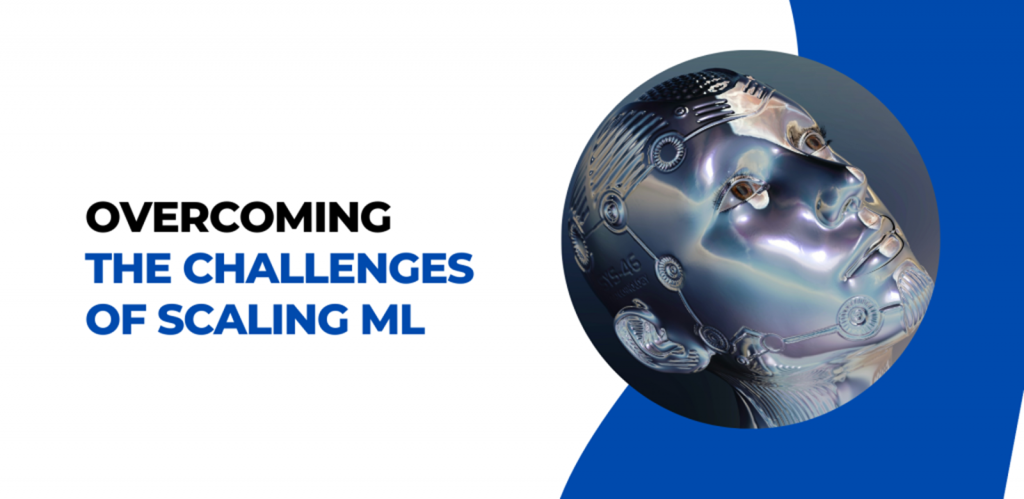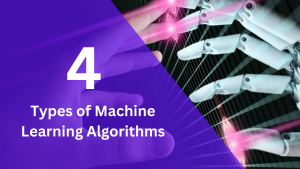Machine Learning is a buzzword in the Industry. Every Organization is trying to use the best of Machine Learning. , But, when they try to scale up the machine learning to make it more efficient, the Organization are facing Machine learning Challenges.
The Machine Learning Model is like making a mixed fruit juice from different fruits. The variety of fruits taken to get the best juice. The fruits chosen are not based on the size but, on the right proportion.
Same way, when scaling the machine learning model algorithm, the data used are to be in the same proportion. The size of the data should not impact the feature of scaling the machine learning algorithm.
The machine learning model has revolutionized various industries by enabling computers to learn from data and make accurate predictions or decisions.
As businesses strive to leverage the power of machine learning, they often encounter challenges when it comes to scaling their models.

In this article, we will explore some of the key challenges of scaling machine learning models and discuss effective strategies to overcome them.
- Scaling Machine Learning Models
- Overcome the Challenges of Scaling Machine Learning Model
- Cost-efficient methods for scaling machine learning model
Scaling Machine Learning Models
As organizations collect and generate vast amounts of data, the need to scale machine learning models arises.
Scaling involves training models on large datasets, handling complex computations, managing storage and memory, addressing feature engineering complexities, selecting appropriate models, ensuring interpretability, deploying models at scale, and facilitating continuous learning.
Challenge 1: Increasing Dataset Size
One of the primary challenges in scaling machine learning models is handling large datasets.
As the volume of data increases, traditional methods may become inefficient, leading to longer training times and increased resource requirements.
Additionally, large datasets require more computational power and memory, making it essential to optimize the training process for scalability.
Challenge 2: Computational Complexity
Scaling machine learning models often involves dealing with complex computations. As models grow larger and more complex, the computational requirements increase exponentially.
Training these models requires powerful hardware, such as GPUs or distributed computing systems, to handle the computational load efficiently.
Challenge 3: Storage and Memory Constraints in Machine Learning Model
Storing and managing large datasets and models pose another challenge when scaling machine learning. As the size of the data and models grows, organizations need to ensure sufficient storage capacity and efficient memory management.
This includes optimizing data storage formats, employing compression techniques, and utilizing distributed file systems or cloud storage solutions.
Challenge 4: Feature Engineering
Feature engineering is a critical step in building machine learning models and needs to understand the Machine Learning Algorithm
However, as datasets grow larger, feature engineering becomes more challenging and time-consuming. It requires domain expertise, data preprocessing techniques, and careful selection of relevant features.
Scaling machine learning models requires scalable feature engineering methods, such as automated feature extraction or dimensionality reduction techniques.
Challenge 5: Machine Learning Model Selection and Architecture
Choosing the right model architecture for scaling can be a daunting task. As datasets become more extensive, models with more parameters and complexity may be required.
It is crucial to select models that strike a balance between performance and scalability. Additionally, implementing techniques like model parallelism or distributed training can help overcome scalability limitations.
Challenge 6: Interpretability and Explainability
While scaling machine learning models, maintaining interpretability and explainability is vital, especially in regulated industries or domains where transparency is crucial.
Complex models, such as deep neural networks, can be difficult to interpret. Techniques like model distillation, surrogate models, or attention mechanisms can enhance interpretability without sacrificing performance.
Challenge 7: Deployment and Scalability
Deploying machine learning models at scale is a challenge on its own. It involves setting up a robust infrastructure, integrating models into existing systems, ensuring low-latency predictions, and handling increased user load.
Containerization technologies like Docker and orchestration frameworks like Kubernetes can help streamline the deployment process and facilitate scalability.
Challenge 8: Continuous Learning in Machine Learning Model
In dynamic environments, models need to adapt to changing data distributions and learn from new information. Scaling machine learning models should consider continuous learning capabilities. Techniques like online learning, transfer learning, or active learning can enable models to evolve and adapt to new scenarios.
Overcoming the Challenges of Scaling Machine Learning Model

To overcome the challenges of scaling machine learning models, organizations can adopt the following strategies:
Data Strategy
Collection
The primary work of Data Strategy is collecting Data.
The data was collected from various sources which include web scraping and API.
This will have data sets with larger sizes.
Cleaning
The next process is the cleaning of data.
The cleaning process involves identifying errors in data and rectifying the missing values.
Curating the data
Here the data is curated for meaningful errors and maintaining quality downstream tasks.
Infrastructure Optimization
Optimizing infrastructure in machine learning is a critical step for efficiency. Huge systems like GPU and cloud platform requires huge computation speed.
Distributed computing frameworks help to solve large data sets complex problems.
Optimizing infrastructure streamlines the process of resource usage, and improvement in the training. It also helps to support high-performance machine learning complex workflows.
Model Design and Optimization
When optimizing the model design, clear strategies are required for optimizing. As we have various data, we need to execute different strategies based on the data set.
For images, we need to have convolutional neural networks for optimizing.
Other strategies such as Gradient descent fine-tuning model parameters used to minimize errors during training.
By using automated tools, hyperparameter tuning helps to optimize the model.
Mixing of all strategies and techniques helps the model to achieve better accuracy, robustness, and real-world applicability.
Interpretability Solutions for Machine Learning Model
Model Interpretability solutions in machine learning are a critical step in decision-making.
This helps to understand the complex data.
There are a lot of techniques used in scaling machine learning and the techniques like LIME and SHAP offer insights.
LIME stands for Local Interpretable Model-agnostic Explanation which provides faithful explanations for individual predictions.
This will break complex models into simple interpretable ones.
SHAP stands for SHapley Additive exPlanations employs game theory. This will contribute to each feature for the prediction. SHAP adopts a holistic method in understanding how different inputs influence the model outcomes.
Enabling techniques like LIME and SHAP helps to interpretable the model features efficiently.
Deployment of Best Practices
When scaling machine learning algorithms, adhering to the best practices is always crucial.
In machine learning algorithm scaling, containerization such as docker is used to maintain a consistent environment across all stages. Orchestration tool like Kubernetes helps to manage effectively in multiple instances.
Regularization Techniques
In machine learning algorithms, a huge amount of data sets are involved. There will be confusion in using more data. To prevent the overfitting of data in machine learning, regularization techniques are introduced.
This technique will introduce penalties to the model’s complexity.
Techniques like L1 and L2 add constraints to the optimization process. This will discourage a lot of excessive usage of specific features.
This results in a balanced model that provides better accuracy to the new data.
Automation Hyperparameters
In scaling machine learning algorithms, automation hyperparameters revolutionize the method. This will fine-tune the model for better performance without any loss in robustness and accuracy.
Techniques like Bayesian optimization or Grid Search are used to explore the parameter combination.
Bayesian optimization acts as a strategic point in the journey of scaling machine learning algorithms. This optimization minimizes the trial and error process making the scaling process smoother.
Monitoring Methods
Monitoring tools act as a safeguard for efficient performance and accuracy. The monitory tool comprises Dashboards and Detection systems.
This helps to protect the data before the error occurs on the model. In fact, this acts as a watchful eye on crucial metrics.
Using this monitoring method, a lot of actionable insights can be provided to the team and the team can make a clear decision on every process.
Privacy techniques
When implementing the growth in machine learning, there are a lot of sensitive data used. Privacy techniques are used to prevent any loss or theft of the data.
Using privacy techniques like federated learning, data are anonymized and encrypted to ensure the model’s accuracy and data privacy.
Cost-efficient methods for scaling machine learning model

During the scaling process, a large amount of resources are required to execute the process. Being cost-efficient means, optimizing the resources as the algorithm grows.
The optimization of resources includes,
1. Resource Monitoring
The cost can be reduced by monitoring the resource on peak demands and off-peak demands. This helps to reduce the cost used for over-provisioning during the off-peak demands.
2. Cloud Services
Using cloud services that can aligned at any time based on the requirement. The cost can be reduced by spending on the unused services.
Cloud is always the best way to scale machine learning algorithms.
3. Auto Scaling
Auto-scaling will dynamically allocate the resources based on the response to traffic. This will use maximum resources when the demand is high and will be using fewer resources during the quieter time.
This will save costs on the use of unwanted resources.
4. Parallel processing
Parallel processing processes the data and divides the tasks among the multiple computational units. The execution time is less and the resource usage is optimal.
5. Batch Processing
Saves a lot of time and resources when the data are processed batch-wise. Huge idle time is saved between the tasks.
6. Caching process
Implementing a caching mechanism helps to store and reuse the same data. This helps reduce the need of reducing computation.
Team Collaboration for efficient machine learning model
A lot of people including data scientists, engineers, and domain experts involved in the process of scaling.
Regular communication and clear workflows between the team help to work towards specific goals and the error rate will be less.
Conclusion
Scaling machine learning models comes with its fair share of challenges.
However, with the right strategies and technologies in place, organizations can overcome these hurdles and unlock the potential of large-scale machine learning. By addressing dataset size, computational complexity, storage constraints, feature engineering complexities, model selection, interpretability, deployment, and continuous learning, businesses can harness the power of scalable machine learning models to gain valuable insights and drive innovation.

